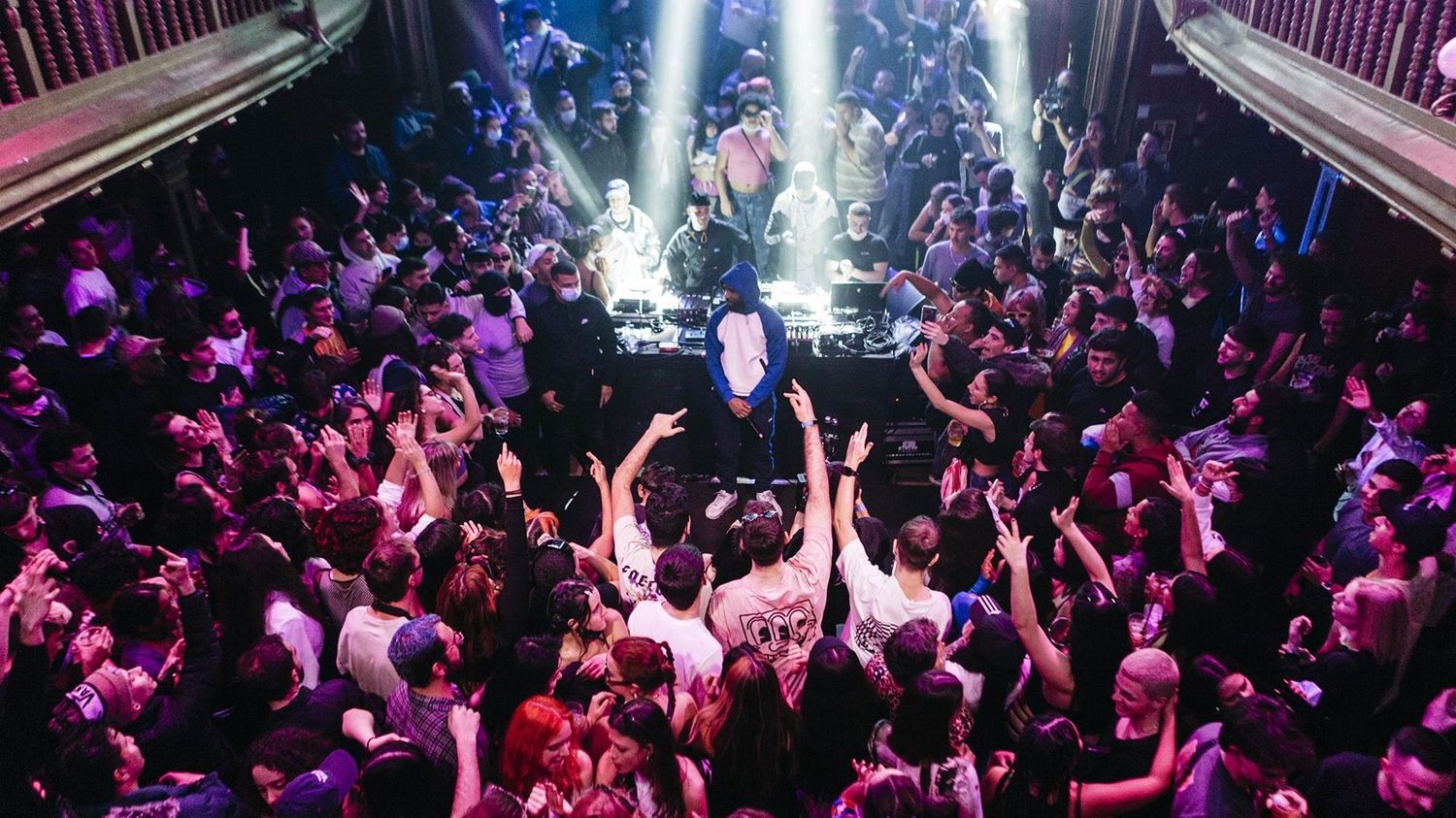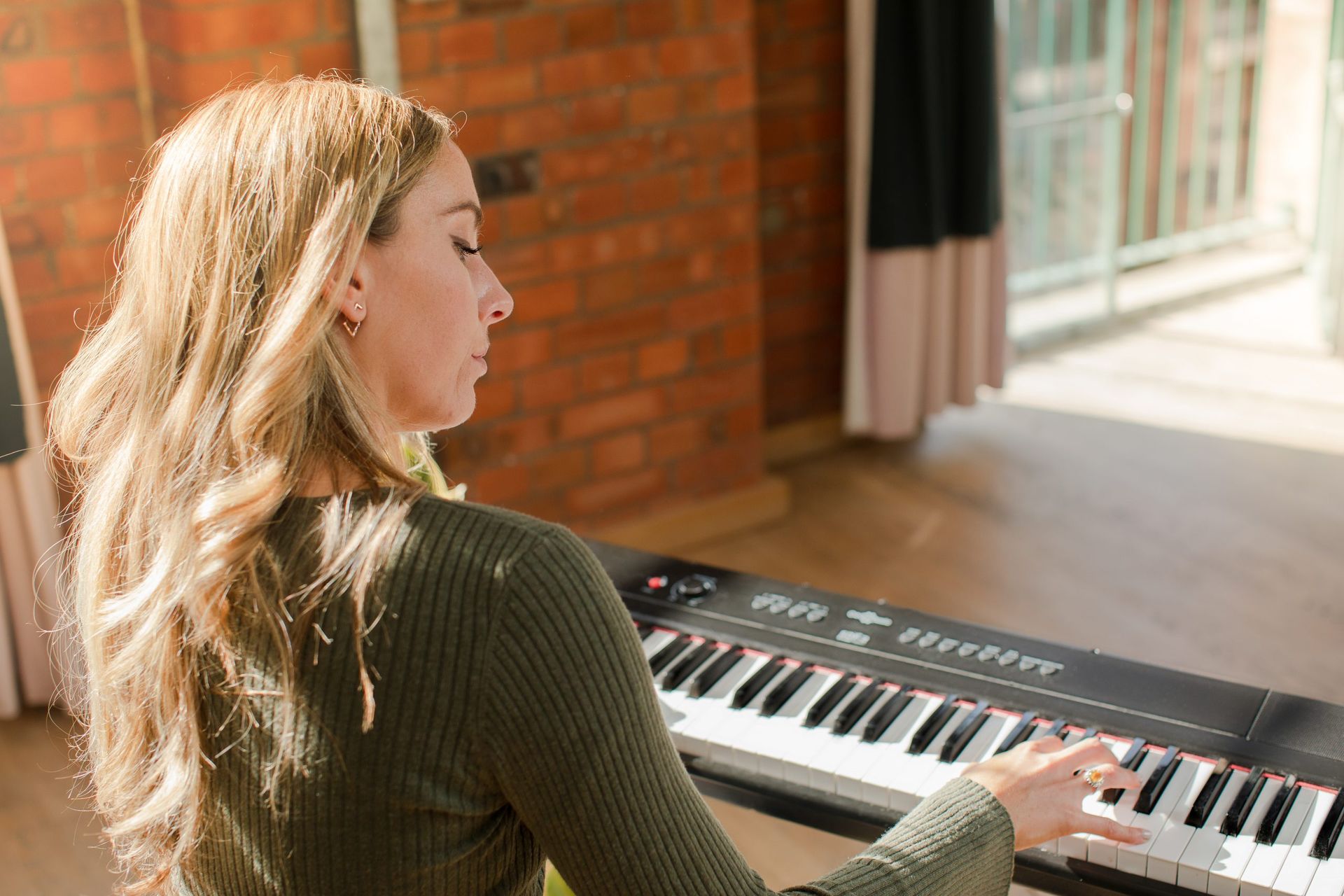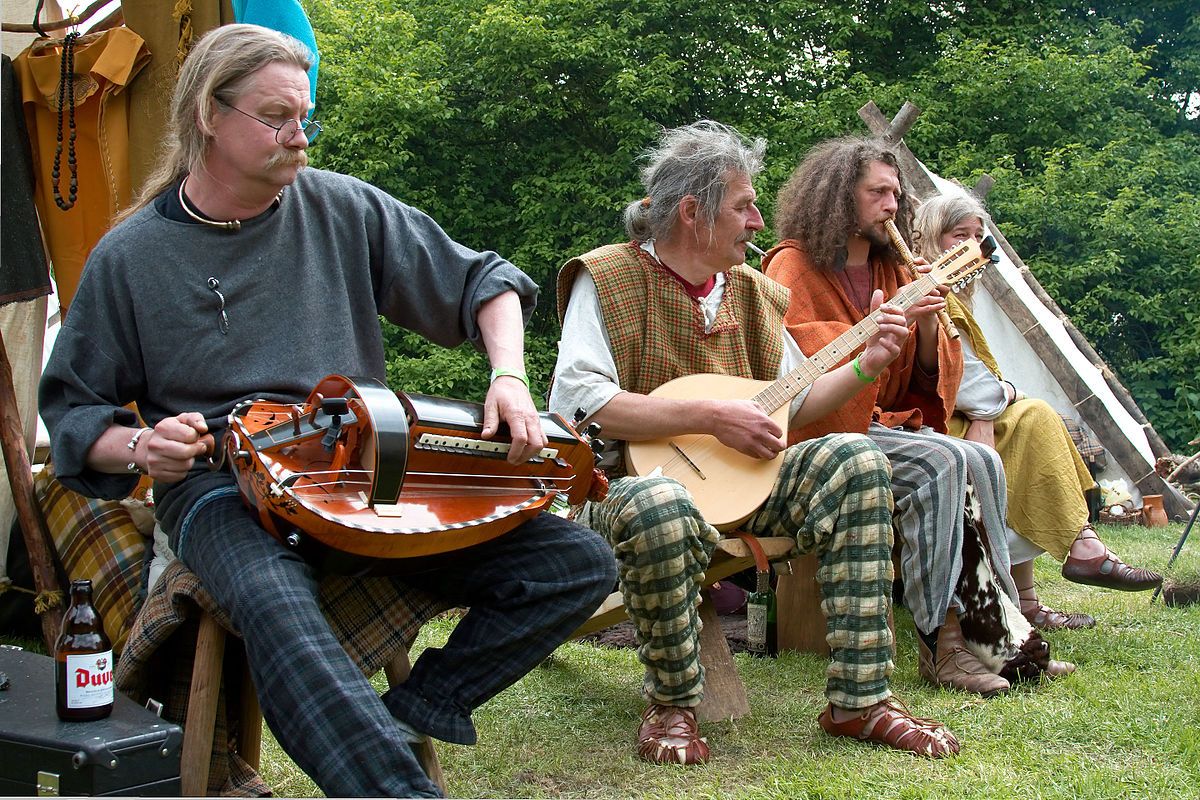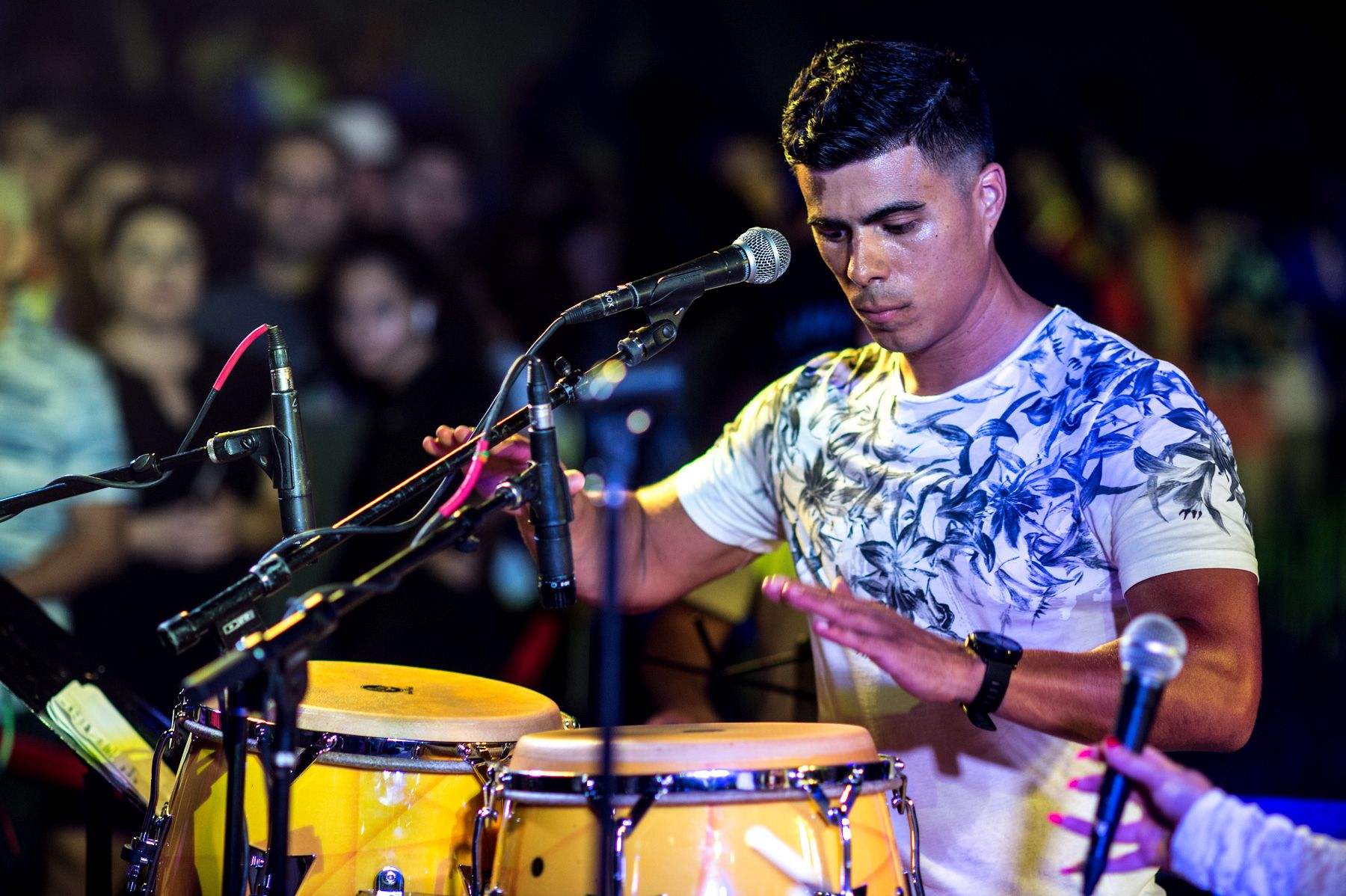Home>Production & Technology>Tempo>What Is The Tempo For Pop Music


Tempo
What Is The Tempo For Pop Music
Published: December 10, 2023
Discover the perfect tempo for pop music and learn how it sets the mood and energy of your favorite songs. Master the art of tempo with our comprehensive guide.
(Many of the links in this article redirect to a specific reviewed product. Your purchase of these products through affiliate links helps to generate commission for AudioLover.com, at no extra cost. Learn more)
Table of Contents
Introduction
Pop music is undeniably one of the most popular and influential music genres in the world. Its catchy melodies, memorable hooks, and relatable lyrics have the power to captivate audiences and dominate the charts. However, behind the scenes, there is another crucial element that plays a significant role in shaping the overall sound and vibe of pop music – tempo.
Tempo refers to the speed at which a piece of music is performed or the pace at which the beats are played. It sets the rhythm and energy of a song, ranging from slow and relaxed to fast and upbeat. Tempo is an essential component in pop music as it directly impacts the emotions, movement, and overall feel of a track.
In this article, we will explore the role of tempo in pop music, the factors influencing tempo selection, common tempos found in pop music, famous pop songs and their tempos, the impact of tempo on listener perception, the evolution of tempo in pop music, and tempo considerations for pop music producers.
It is crucial for pop music producers, songwriters, and performers to understand how tempo influences the listener experience and how it can be utilized to create the desired impact. Whether it’s setting the mood for a romantic ballad or getting people on their feet for a dance anthem, tempo is a key tool that artists can use to engage with their audience on a deeper level.
Join us as we dive into the world of pop music and uncover the fascinating role of tempo, its influence on the genre’s evolution, and its ever-growing significance in shaping the sound of today’s popular music.
The Role of Tempo in Pop Music
Tempo plays a vital role in defining the mood and energy of a pop song. It sets the pace at which the beats and rhythms are played, creating a foundation for the entire composition. The tempo of a pop song can evoke a range of emotions, from a slow and reflective ballad to a fast-paced and energetic club banger.
One of the key aspects of pop music is its ability to engage and connect with listeners. Tempo plays a significant role in this by affecting how people respond to the music. A faster tempo often results in a more energetic and lively atmosphere, compelling listeners to tap their feet, nod their heads, or even break into dance. On the other hand, a slower tempo can create a more introspective and emotional ambiance, allowing listeners to connect with the lyrics on a deeper level.
Moreover, tempo can also contribute to the overall accessibility and commercial appeal of a pop song. The right tempo can make a song more memorable and catchy, increasing its chances of becoming a hit. It can influence how easily a song can be sung along to or grooved to, making it more likely to resonate with a wide range of listeners.
In addition to its impact on the listener experience, tempo also plays a crucial role in the arrangement and production of pop music. The tempo sets the foundation for the rhythmic elements such as drums, bassline, and percussion, giving them a sense of coherence and synchronicity. It provides a framework for the instrumental and vocal melodies, allowing them to seamlessly intertwine and create a cohesive musical structure.
Overall, tempo acts as a musical glue that holds all the elements of a pop song together. It sets the pace, vibe, and emotional tone of the music, making it a fundamental aspect of the genre. Understanding how to harness the power of tempo is a valuable skill for pop music producers and songwriters, as it can greatly influence the impact and success of their creations.
Factors Influencing Tempo Selection in Pop Music
The selection of tempo in pop music is influenced by several factors, each playing a significant role in shaping the overall sound and vibe of a song. Here are some key factors that contribute to tempo selection in pop music:
- Genre and Style: Different genres and styles within pop music have their own typical tempos. For example, ballads tend to have slower tempos to evoke a sense of intimacy and emotion, while upbeat pop songs often have faster tempos to create a more energetic and danceable feel. The genre and style of a song greatly influence the tempo selection.
- Lyrics and Message: The lyrical content and message of a song can also dictate the tempo. A heartfelt and reflective ballad may call for a slower tempo to allow the lyrics to be deeply felt and understood. On the other hand, an empowering anthem may benefit from a faster tempo to enhance the energy and impact of the message.
- Target Audience: The target audience of a pop song plays a crucial role in tempo selection. The preferences and expectations of the intended listeners can guide the tempo choice. For example, songs targeting a younger demographic may benefit from faster tempos to appeal to their energy and taste, while songs aimed at a mature audience may lean towards slower tempos for a more mature and sophisticated feel.
- Danceability: Pop music is often associated with dance and movement, so the danceability of a song is a significant consideration when selecting the tempo. A tempo that encourages rhythmic movement and groove can make a song more appealing and enjoyable for listeners who want to dance or engage physically with the music.
- Artistic Vision: The artistic vision of the songwriter or producer is also an important factor in tempo selection. They may have a specific intention or vision for the mood or feel of the song that is best achieved through a particular tempo. Their creativity and musical instincts play a vital role in determining the tempo that best brings their artistic vision to life.
When selecting the tempo for a pop song, it is essential to consider these factors in combination. Finding the right balance and alignment between genre, lyrics, audience, danceability, and artistic vision can result in a tempo choice that perfectly suits the intended emotional impact and overall experience of the song.
Common Tempos Found in Pop Music
Pop music encompasses a wide range of tempos, each serving a unique purpose in creating the desired mood and feel of a song. While there is no definitive list of tempos for pop music, certain tempo ranges are commonly employed. Here are some common tempos found in pop music:
- Slow Tempo (60-80 BPM): Slow tempos are often used for ballads and emotional songs. They create a sense of intimacy and allow for the lyrics to take center stage. This tempo range is ideal for evoking deep emotions and capturing the hearts of listeners.
- Moderate Tempo (80-120 BPM): The moderate tempo range is one of the most versatile in pop music. It covers a wide range of styles and moods, from mid-tempo pop-rock anthems to catchy radio-friendly tunes. This tempo range strikes a balance between energy and accessibility, making it highly popular in the mainstream pop music landscape.
- Upbeat Tempo (120-140 BPM): Upbeat tempos are often associated with feel-good pop songs and danceable tracks. This tempo range is perfect for getting people on the dance floor and creating an energetic and infectious atmosphere. It is commonly used in pop songs with catchy hooks and vibrant melodies.
- Fast Tempo (140+ BPM): Fast tempos are commonly found in pop songs with high energy and a strong emphasis on movement. This tempo range is often used in pop, EDM, and dance-pop genres, as it creates a relentless and pulsating groove. Fast tempos amplify the excitement and create a sense of exhilaration for both the listener and the performer.
It’s worth noting that these tempo ranges are not set in stone, and many pop songs may fall outside of these general categories. Pop music is continually evolving, and artists and producers are constantly pushing boundaries and experimenting with tempo to create unique and innovative sounds.
The choice of tempo in pop music ultimately depends on the desired emotional impact, genre conventions, target audience, and artistic vision of the song. A well-executed tempo selection can significantly enhance the listener experience and contribute to the success of a pop song.
Famous Pop Songs and Their Tempos
Pop music has given us countless memorable songs that have topped the charts and become anthems for generations. These songs come in a variety of tempos, each contributing to their unique appeal and impact. Let’s explore some famous pop songs and their associated tempos:
- “Shape of You” by Ed Sheeran (96 BPM): This chart-topping hit from Ed Sheeran has a moderate tempo that falls within the range of 80-120 BPM. The infectious rhythm, catchy melodies, and relatable lyrics propelled this song to immense popularity.
- “Someone Like You” by Adele (67 BPM): Adele’s emotional ballad, “Someone Like You,” is a perfect example of a slow tempo song in pop music. The slower tempo of 60-80 BPM allows the soulful lyrics and Adele’s powerful vocals to shine, creating a deeply moving listening experience.
- “Uptown Funk” by Mark Ronson ft. Bruno Mars (115 BPM): A high-energy, danceable track, “Uptown Funk” boasts an upbeat tempo within the range of 120-140 BPM. The vibrant horns, groovy bassline, and Bruno Mars’ energetic vocals make it a feel-good anthem that gets people on their feet.
- “Bad Guy” by Billie Eilish (135 BPM): Billie Eilish’s breakout hit, “Bad Guy,” showcases a faster tempo of 140+ BPM. The driving rhythm, dark and edgy lyrics, and Billie’s captivating vocals create a unique and memorable sound that resonated with listeners.
- “Despacito” by Luis Fonsi ft. Daddy Yankee (89 BPM): This global sensation became one of the most successful Latin-pop songs of all time. “Despacito” has a moderate tempo, combining infectious Latin rhythms and catchy melodies to create a sensual and irresistible groove.
These are just a few examples of the diverse range of tempos found in famous pop songs. From slow, introspective ballads to fast-paced, danceable tracks, pop music offers something for everyone, catering to different moods and preferences.
It’s important to note that tempo alone does not determine the success of a song. The melodies, lyrics, production quality, and the artist’s performance also play significant roles. However, the tempo choice undoubtedly contributes to the overall impact and commercial appeal of a pop song.
The Impact of Tempo on Listener Perception
Tempo plays a crucial role in shaping the listener’s perception and emotional response to a piece of music. The speed at which a pop song is performed directly impacts how listeners experience and interpret the music. Here are some ways in which tempo influences listener perception:
Energy and Excitement: The tempo of a pop song can evoke feelings of energy and excitement in listeners. A fast-paced tempo with an upbeat rhythm creates a sense of liveliness and encourages physical movement. It can make listeners feel energized and motivated, leading to a positive perception of the music and a desire to engage with it.
Mood and Emotional Resonance: The tempo of a pop song significantly influences the emotional response it elicits. Slower tempos often evoke introspection, introspective feelings, and emotional depth. On the other hand, faster tempos can create a sense of joy, excitement, and optimism. The perceived mood of a song based on its tempo greatly impacts the listener’s emotional connection with the music.
Danceability and Groove: The tempo of a pop song can determine its danceability and groove. A moderate to fast tempo with a strong beat is more likely to make listeners want to move their bodies and dance along. The presence of a consistent rhythm and a tempo that is well-suited for dancing can enhance the perceived enjoyment of the music.
Attention and Engagement: The tempo of a pop song can also influence the listener’s level of attention and engagement. A faster tempo may capture the listener’s attention right from the beginning and maintain their engagement throughout the song. On the other hand, a slower tempo may require a more patient and focused listening experience, allowing the listener to fully absorb the musical nuances and lyrical content.
Perceived Intensity and Impact: The tempo choice can also impact the perceived intensity and impact of a pop song. A fast tempo can create a sense of urgency and intensity, driving the energy of the music and making it more memorable. A slower tempo, on the other hand, can create a sense of intimacy and build anticipation, making the eventual climax or emotional release more impactful.
Overall, tempo serves as a powerful tool in shaping the listener’s perception of a pop song. It can elicit specific emotions, determine the level of engagement, and influence the overall experience of the music. Pop music producers and songwriters carefully consider tempo choices to maximize the desired impact and create a memorable listening experience for their audience.
Evolution of Tempo in Pop Music
The tempo in pop music has evolved significantly over the years, reflecting the trends, innovations, and cultural shifts that have shaped the genre. From the early days of pop music to the present, the evolution of tempo has played a vital role in defining the soundscape of each era.
In the early days of pop music, slower tempos were often prevalent, with ballads and mid-tempo songs dominating the charts. Artists like Frank Sinatra and Ella Fitzgerald delivered timeless classics with their smooth, soulful performances, showcasing the emotional depth that slower tempos could convey.
As the pop music landscape evolved, faster tempos began to take center stage. The emergence of genres like rock and roll in the 1950s and 1960s brought with it a newfound energy and rebellious spirit. Songs by artists like Elvis Presley and Buddy Holly showcased faster, more uptempo beats that were ideal for dancing and created a sense of excitement and enthusiasm.
In the 1970s and 1980s, there was a wide range of tempos in pop music as different genres and sub-genres flourished. Disco and funk introduced infectious grooves and pulsating rhythms, often featuring fast tempos to get people on the dance floor. Meanwhile, power ballads and slow-tempo love songs became popular, emphasizing emotional depth and heartfelt expressions.
The advent of electronic music and the rise of synthesizers in the 1980s and 1990s led to the exploration of unique and experimental tempos. Dance and techno music embraced fast-paced, high-energy beats, while pop and R&B incorporated slower grooves and mid-tempo tracks. The tempo choices in these decades represented the diverse range of musical influences and technological advancements in pop music.
In recent years, pop music has seen a resurgence of faster tempos with the rise of EDM (Electronic Dance Music) and the blending of various genres. Artists like Calvin Harris, David Guetta, and The Chainsmokers have integrated fast tempos and energetic beats into their chart-topping hits, catering to the demand for high-energy party anthems.
However, slower tempos have not been forgotten. Slow-tempo pop ballads still find success in modern pop music with artists like Adele, Ed Sheeran, and Sam Smith captivating audiences with their heartfelt performances. These slower tempos offer a more introspective and emotional listening experience.
The evolution of tempo in pop music reflects the changing tastes and preferences of listeners, as well as the influence of cultural shifts and technological advancements. Pop music continues to evolve, with artists and producers pushing the boundaries of tempo, experimenting with new styles and sounds, and redefining the genre’s sonic landscape.
Tempo Considerations for Pop Music Producers
For pop music producers, choosing the right tempo is a crucial decision that can significantly impact the success and appeal of a song. Here are some important tempo considerations for pop music producers to keep in mind:
Genre and Intended Audience: Understanding the target genre and intended audience of a pop song is essential when selecting the tempo. Different genres have their own typical tempos, and catering to the preferences of the target audience can greatly enhance the song’s reception.
Emotions and Mood: The tempo should align with the emotional message and intended mood of the song. Slower tempos may be appropriate for conveying introspection or deep emotional impact, while faster tempos can create a sense of excitement or energy. Producers must ensure the tempo enhances the desired emotional impact of the song.
Lyrics and Melody: The tempo should complement the lyrics and melody of the song. It should allow the lyrics to be expressed clearly and effectively, while also fitting well with the melodic structure. Finding the right balance between the tempo, lyrics, and melody is essential for creating a cohesive and engaging musical experience.
Danceability and Groove: Pop music is often associated with dance and movement, so the tempo should be danceable and have a good groove. It should allow listeners to easily tap their feet or move their bodies in response to the rhythm. A well-suited tempo can contribute to the song’s overall energy and enjoyment.
Production Techniques and Arrangement: The tempo choice can affect the production techniques and arrangement of a pop song. It determines the pace at which the different elements of the song, such as drums, bassline, and instrumentation, are played. Producers need to consider how the tempo will impact the overall arrangement and ensure all the elements work harmoniously together.
Market Trends and Commercial Viability: Producers should also take into account current market trends and commercial viability when choosing the tempo. Keeping a pulse on what’s popular in the industry can help ensure the song has the potential to resonate with listeners and stand out in the competitive pop music landscape.
Artistic Vision and Experimentalism: While considering various factors, producers should also follow their artistic vision and embrace experimentation. Pushing the boundaries of tempo and exploring unconventional choices can lead to unique and innovative soundscapes. It’s important to strike a balance between commercial appeal and artistic integrity.
Ultimately, tempo selection in pop music production is a careful balance between understanding the genre, connecting with the intended audience, conveying emotions effectively, and aligning with the artistic vision. By considering these factors, pop music producers can create compelling and impactful songs that resonate with listeners and leave a lasting impression.
Conclusion
Tempo is a fundamental element in pop music, playing a significant role in defining the mood, energy, and overall appeal of a song. Whether it’s a slow and heartfelt ballad, a mid-tempo radio-friendly hit, or a fast-paced dance anthem, the tempo choice directly impacts the listener experience and emotional connection to the music.
Throughout the evolution of pop music, the tempo has evolved in response to changing trends, technological advancements, and cultural shifts. From slower, soulful ballads to high-energy dance tracks, pop music has embraced a diverse range of tempos to capture different emotions and cater to various tastes.
Pop music producers have a crucial role in selecting the right tempo to enhance the song’s impact and appeal. Factors such as genre, lyrics, intended audience, and danceability must be considered to create a cohesive and engaging musical experience. Additionally, there is room for artistic vision and experimentation to push the boundaries and create unique sounds that captivate listeners.
Understanding the impact of tempo on listener perception allows producers to effectively convey emotions, create memorable hooks, and design immersive experiences. Tempo serves as a powerful tool to evoke emotions, engage listeners, and reflect the depth and breadth of human experiences.
As pop music continues to evolve, tempo will remain a defining element in shaping the genre’s sound and impact. By carefully considering tempo choices and harnessing its power, pop music producers can create compelling songs that resonate with audiences across the globe.
Whether it’s getting people on their feet, moving them to tears, or simply providing an enjoyable listening experience, tempo in pop music will continue to play a crucial role in captivating hearts and dominating the charts.











